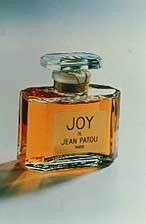+Chrisohnbeckett+flickr+(some+rights+reserved).jpg) The hunt for the perfect lilac (syringa) has taken me into semi-treacherous paths of testing dubious essences concocted in amateur workshops, as well as laying out good money in the pursuit of the unsatisfying (ie.the let-down that was En Passant for me personally, because of its watery-yeasty direction) or the perfectly congenial (Tocadilly by Rochas and Ineke After my Own Heart). Now that the season of lilacs has here reached its end, it is with the somewhat premature nostalgia of tasting the end of a beautiful phase that I find myself reaching anew for one of the scents which utilize lilacs in a realistic rendition: the Highland Lilac of Rochester, NY, the Lilac Capital of the world. Every May the Lilac Festival of Rochester consists of a lavish array of flowers and attractions which commemorates a flower traditionally close to the heart of Americans: from the garden of Thomas Jefferson to the Custis and the George Washington Families who financed the region abundant in the blooms.
The hunt for the perfect lilac (syringa) has taken me into semi-treacherous paths of testing dubious essences concocted in amateur workshops, as well as laying out good money in the pursuit of the unsatisfying (ie.the let-down that was En Passant for me personally, because of its watery-yeasty direction) or the perfectly congenial (Tocadilly by Rochas and Ineke After my Own Heart). Now that the season of lilacs has here reached its end, it is with the somewhat premature nostalgia of tasting the end of a beautiful phase that I find myself reaching anew for one of the scents which utilize lilacs in a realistic rendition: the Highland Lilac of Rochester, NY, the Lilac Capital of the world. Every May the Lilac Festival of Rochester consists of a lavish array of flowers and attractions which commemorates a flower traditionally close to the heart of Americans: from the garden of Thomas Jefferson to the Custis and the George Washington Families who financed the region abundant in the blooms.The fragrance was conceived in 1967 and developped by International Flavors and Fragrances perfumers consequently becoming the romantic choice of no less than 5 US first ladies. Each Spring, the rare double flowering and other special varieties of lilac buds and blossoms are harvested, collected and tested to ensure adherence to the original composition. The formula seems to undulate between an oily, yet fresh top note not unlike that of hyacinths, with a spicy whisper of anisaldehyde. The sensuality of the drydown brings a lightly powdery, not too sweet darkness that speaks of lovers amidst the bushes. Among lilac fragrances Highland Lilac of Rochester stands as the one which best captures both facets of the natural blossoms.
.jpg) Osmanthus fragrans (Sweet Osmanthus) or 桂花/ guìhuā in Chinese and金木犀/ Kinmokusei in Japanese is ~like lilac~ another member of the Oleaceae family and its fresh and highly fragrant aroma is a natural wonder professing a nuanced texture. Also known as Tea Olive (because olive is the pre-eminent member of the Oleaceae family) it is the emblem flower of Hangzhou, China. It is therefore not surprising that one of the best renditions of the elusive wonder is made in China. The local company 芭蕾 producing it translates as "Ballet", which is highly appropriate considering the dancing nature of the scent on skin. Highly fragrant and succulent in its peachy-apricoty top note it is nothing short of mouthwatering. The effect of the natural flower is undoubtedly enhanced with a synthesized apricoty creamy note (benzylaldehyde, aldehyde C16, amyl butyrate?), giving an almost velours effect along with an ionone note of sweet violet. Later on the scent takes on the delicious aroma of a freshly taken-out of the wardrobe suede coat, its butyric creaminess a welcome contrast to the fruity-floral heart.
Osmanthus fragrans (Sweet Osmanthus) or 桂花/ guìhuā in Chinese and金木犀/ Kinmokusei in Japanese is ~like lilac~ another member of the Oleaceae family and its fresh and highly fragrant aroma is a natural wonder professing a nuanced texture. Also known as Tea Olive (because olive is the pre-eminent member of the Oleaceae family) it is the emblem flower of Hangzhou, China. It is therefore not surprising that one of the best renditions of the elusive wonder is made in China. The local company 芭蕾 producing it translates as "Ballet", which is highly appropriate considering the dancing nature of the scent on skin. Highly fragrant and succulent in its peachy-apricoty top note it is nothing short of mouthwatering. The effect of the natural flower is undoubtedly enhanced with a synthesized apricoty creamy note (benzylaldehyde, aldehyde C16, amyl butyrate?), giving an almost velours effect along with an ionone note of sweet violet. Later on the scent takes on the delicious aroma of a freshly taken-out of the wardrobe suede coat, its butyric creaminess a welcome contrast to the fruity-floral heart.In both fragrances the fleshy naturals are flanked by man-made essences which bring diffusion and radiance, yet the surprise they created in me was pointed: here were two elusive scents captured lovingly!
.jpg)
Highland Lilac of Rochester can be purchased online on the official Highland Lilac site (1oz for $49.95) I do not know of an online source for the above osmanthus fragrance, alas, as I was given a decant by a friend to try out. However Hove’s of New Orleans Tea Olive ~although not quite as faithful~ is a very nice rendition with white floral accents.
Top pic of Zhang Zigy from Hero via Chrisohnbeckett/flickr (some rights reserved) and second pic via evilelitest.blogspot.com.
Osmanthus via wikimedia commons.
.jpg)







